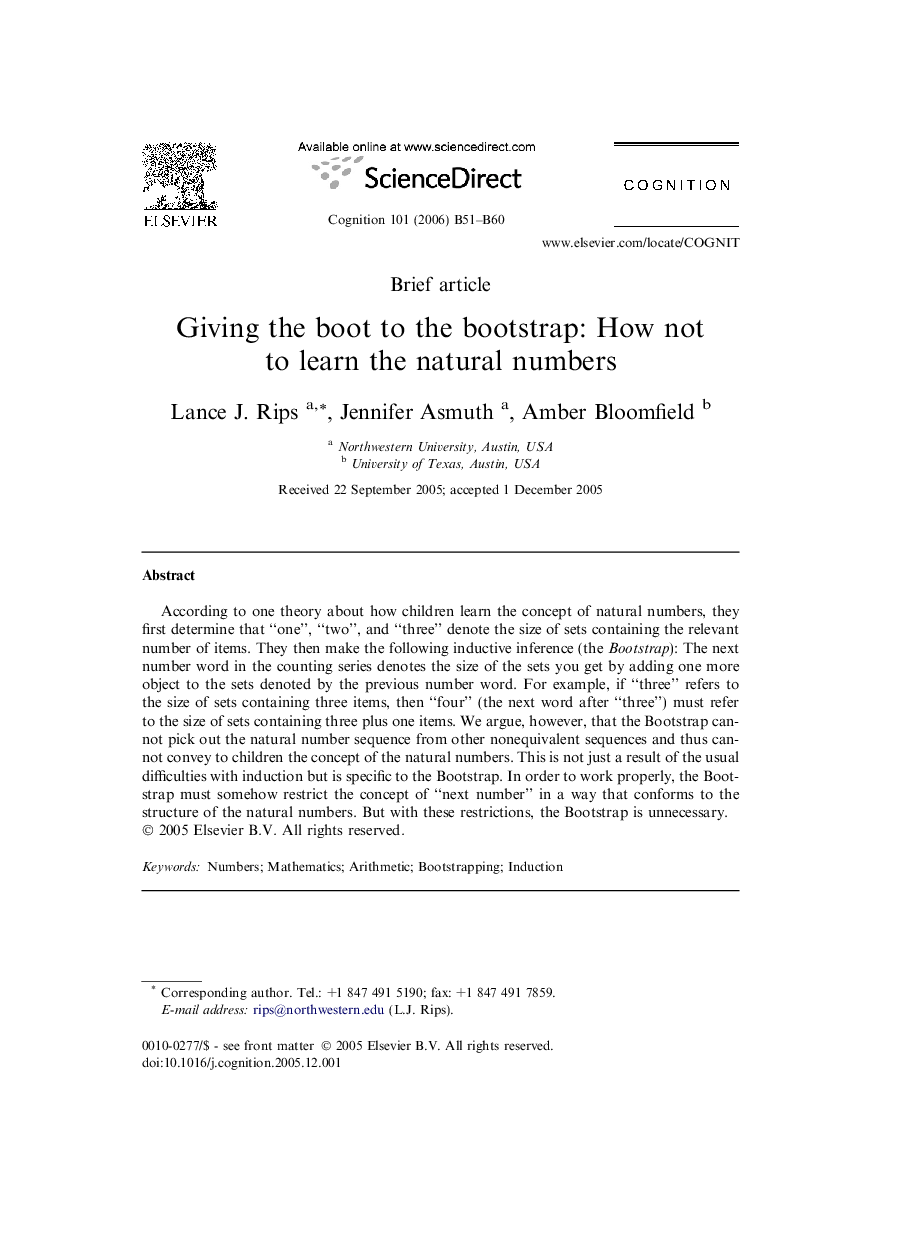| Article ID | Journal | Published Year | Pages | File Type |
|---|---|---|---|---|
| 926992 | Cognition | 2006 | 10 Pages |
According to one theory about how children learn the concept of natural numbers, they first determine that “one”, “two”, and “three” denote the size of sets containing the relevant number of items. They then make the following inductive inference (the Bootstrap): The next number word in the counting series denotes the size of the sets you get by adding one more object to the sets denoted by the previous number word. For example, if “three” refers to the size of sets containing three items, then “four” (the next word after “three”) must refer to the size of sets containing three plus one items. We argue, however, that the Bootstrap cannot pick out the natural number sequence from other nonequivalent sequences and thus cannot convey to children the concept of the natural numbers. This is not just a result of the usual difficulties with induction but is specific to the Bootstrap. In order to work properly, the Bootstrap must somehow restrict the concept of “next number” in a way that conforms to the structure of the natural numbers. But with these restrictions, the Bootstrap is unnecessary.
